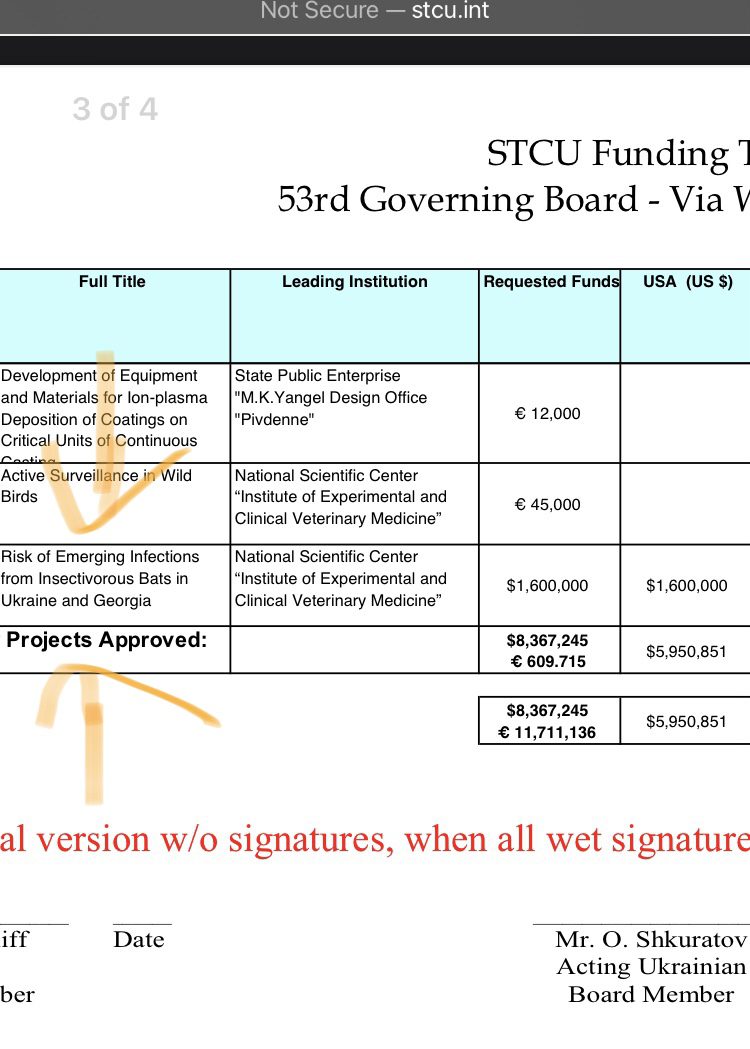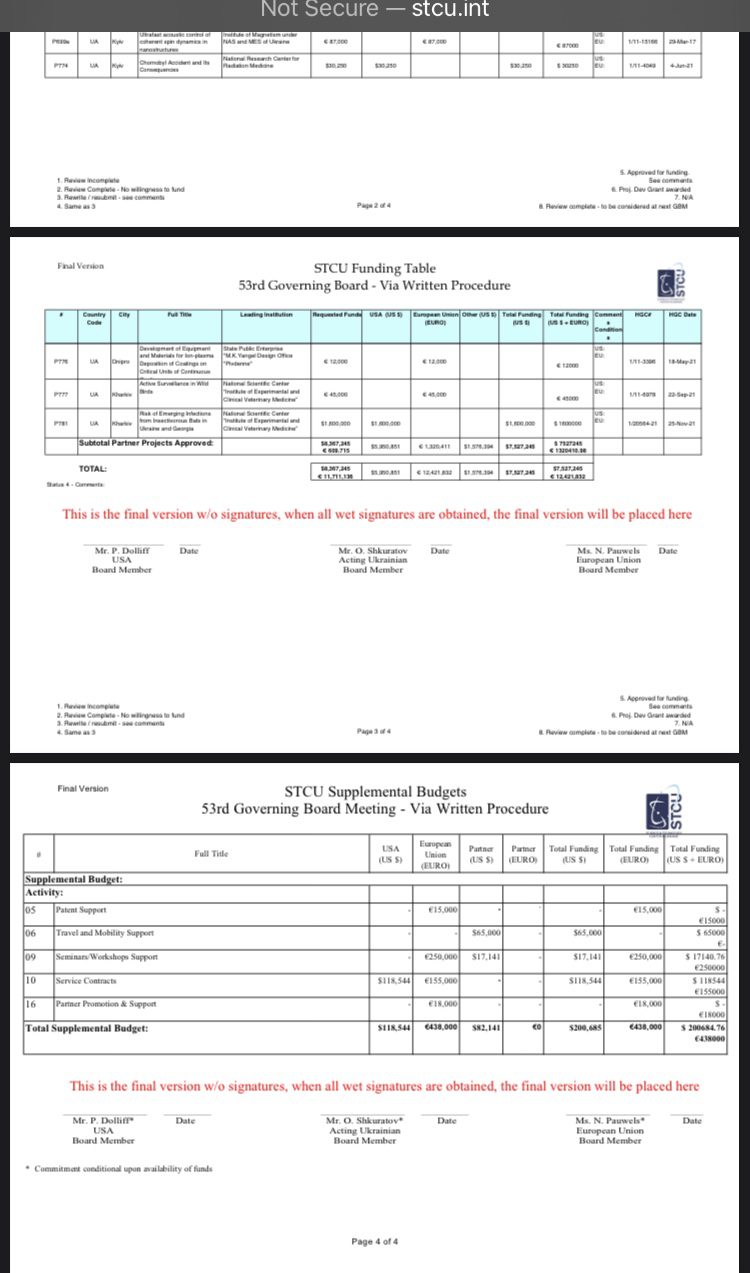As WeLoveTrump previously reported, Russia requested a meeting with the UN Security Council this morning to present evidence of military biological activities by the United States in Ukraine.
While U.S. officials accused Russia of gaslighting about the biolabs in Ukraine, Under Secretary of State for Political Affairs Victoria Nuland acknowledged the existence of the biolabs in a U.S. Senate hearing.
Russian officials released a preliminary report of their alleged findings before the UN Security Council meeting.
The documents included one study that listed CDC official Andres Velasco-Villa listed by name.
The alleged study shows U.S. and Ukrainian officials studying insectivorous bats in Ukraine and detection of emerging viral and bacterial pathogens including coronavirus.
Here's a link to the study and a snapshot posted below:

I want you to take note of the funding section and remember the STCU.
Many have questioned if these are actually captured documents or Russian propaganda.
We will investigate that later in the post.
Here is the preliminary report released by Russia of the alleged captured documents:
Briefing on the results of the analysis of documents related to the military biological activities of the United States on the territory of Ukraine ➡️ https://t.co/J3AgoSVu9T
Original documents and translations ➡️ https://t.co/CZISFHCnUP pic.twitter.com/0MyLzbk3xf
— Минобороны России (@mod_russia) March 10, 2022
I FOUND AN ADDITIONAL DOCUMENT THAT SHOWS REQUESTED U.S. FUNDING INTO RISK OF EMERGING INFECTIONS FROM INSECTIVOROUS BATS IN UKRAINE!
The document comes from the Science & Technology Center in Ukraine (STCU).
The STCU "provides scientists from Azerbaijan, Georgia, Moldova, Ukraine and Uzbekistan the ability to conduct research with full grant support."
Here is the STCU's Vision Statement & Mission:
STCU Vision Statement:
To advance global peace and prosperity through cooperative Chemical, Biological, Radiological, and Nuclear (CBRN) risk mitigation by supporting civilian science and technology partnerships and collaboration that address global security threats and advance non-proliferation.
STCU Mission:
- To address the global security threat of the proliferation of WMD-applicable chemical, biological, radiological and nuclear (CBRN) knowledge and materials;
- To support the integration of scientists with WMD applicable knowledge into global scientific and economic communities through national, regional, and international research collaboration;
- To develop and sustain a culture of nonproliferation and CBRN security awareness and responsibility through education, mentorship, and training;
- To promote international best practices and security culture to mitigate CBRN security threats.
If we review the STCU Governing Board, one of the listed board members is Phil Dolliff, Deputy Assistant Secretary of State for International Security & Nonproliferation Programs.
What does Phil Dolliff do?
Here's his bio on the U.S. State Department website:
Phillip Dolliff is the Deputy Assistant Secretary for Nonproliferation Programs (ISN/NP) in the Bureau of International Security and NonProliferation in the U.S. Department of State. In this capacity, he oversees the $200 million set of Nonproliferation programs in the ISN bureau, including the Cooperative Threat Reduction (CTR) Office, NonProliferation and Disarmament Fund (NDF), Weapons of Mass Destruction Terrorism Office, and the Export Control Cooperation Office. These programs reduce nonproliferation threats worldwide ranging from those posed by proliferant states such as North Korea to those posed by terrorist groups.
Now, the document in question is the STCU Funding Table - 53rd Governing Board - Via Written Procedure.
The document lists requested U.S. funds of $1.6 million for "Risk of Emerging Infections from Insectivorous Bats in Ukraine and Georgia."
The National Scientific Center “Institute of Experimental and Clinical Veterinary Medicine” was the leading institution for the study based in Kharkiv.
Here are screenshots in case this page is scrubbed from the STCU website later:
Here are steps to navigate the STCU website to find this Funding Table:
- From the homepage, scroll to the bottom right and click "Document Center" (under "Who We Are")
- Click "STCU Information"
- Under GBM Documents, click "Board 53, via ZOOM and written procedure"
- Click "Funding Table"
So, I would like to present a question to the U.S. Department of State.
Why did we fund $1.6 million to study "Risk of Emerging Infections from Insectivorous Bats in Ukraine and Georgia?"
I recommend readers saving their own screenshots in addition to the ones provided above.







Join the conversation!
Please share your thoughts about this article below. We value your opinions, and would love to see you add to the discussion!